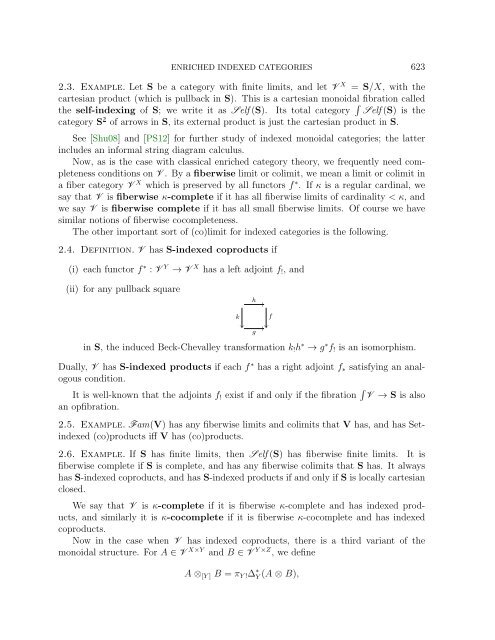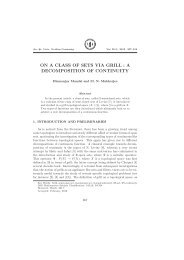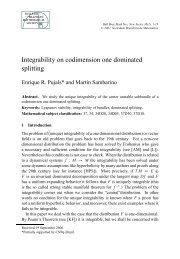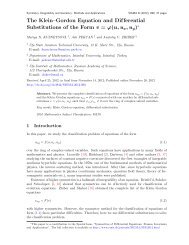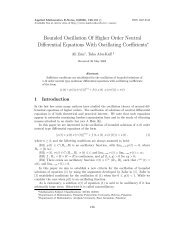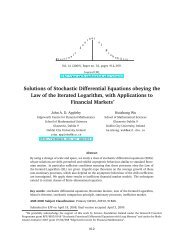ENRICHED INDEXED CATEGORIES Contents 1. Introduction
ENRICHED INDEXED CATEGORIES Contents 1. Introduction
ENRICHED INDEXED CATEGORIES Contents 1. Introduction
You also want an ePaper? Increase the reach of your titles
YUMPU automatically turns print PDFs into web optimized ePapers that Google loves.
<strong>ENRICHED</strong> <strong>INDEXED</strong> <strong>CATEGORIES</strong> 6232.3. Example. Let S be a category with finite limits, and let V X = S/X, with thecartesian product (which is pullback in S). This is a cartesian monoidal fibration calledthe self-indexing of S; we write it as Self (S). Its total category ∫ Self (S) is thecategory S 2 of arrows in S, its external product is just the cartesian product in S.See [Shu08] and [PS12] for further study of indexed monoidal categories; the latterincludes an informal string diagram calculus.Now, as is the case with classical enriched category theory, we frequently need completenessconditions on V . By a fiberwise limit or colimit, we mean a limit or colimit ina fiber category V X which is preserved by all functors f ∗ . If κ is a regular cardinal, wesay that V is fiberwise κ-complete if it has all fiberwise limits of cardinality < κ, andwe say V is fiberwise complete if it has all small fiberwise limits. Of course we havesimilar notions of fiberwise cocompleteness.The other important sort of (co)limit for indexed categories is the following.2.4. Definition. V has S-indexed coproducts if(i) each functor f ∗ : V Y → V X has a left adjoint f ! , and(ii) for any pullback squarehkin S, the induced Beck-Chevalley transformation k ! h ∗ → g ∗ f ! is an isomorphism.Dually, V has S-indexed products if each f ∗ has a right adjoint f ∗ satisfying an analogouscondition.It is well-known that the adjoints f ! exist if and only if the fibration ∫ V → S is alsoan opfibration.2.5. Example. Fam(V) has any fiberwise limits and colimits that V has, and has Setindexed(co)products iff V has (co)products.2.6. Example. If S has finite limits, then Self (S) has fiberwise finite limits. It isfiberwise complete if S is complete, and has any fiberwise colimits that S has. It alwayshas S-indexed coproducts, and has S-indexed products if and only if S is locally cartesianclosed.We say that V is κ-complete if it is fiberwise κ-complete and has indexed products,and similarly it is κ-cocomplete if it is fiberwise κ-cocomplete and has indexedcoproducts.Now in the case when V has indexed coproducts, there is a third variant of themonoidal structure. For A ∈ V X×Y and B ∈ V Y ×Z , we defineA ⊗ [Y ] B = π Y ! ∆ ∗ Y (A ⊗ B),gf


